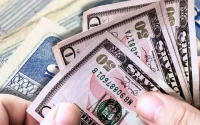Silver's $50 Record: Industrial Revolution or Just Gold's Shadow?
On October 9, 2025, a number that has been the stuff of legend for precious metals traders finally flashed across terminal screens: $50. Silver, the volatile, often-overlooked cousin of gold, officially surpassed its 45-year-old record. The previous high-water mark of $49.45, set during the speculative frenzy of the Hunt Brothers' corner in 1980, was relegated to a historical footnote.
The press releases, like the one from retailer APMEX, were immediate and predictable, framing the event as a culmination of powerful, fundamental forces. The narrative, captured in headlines like A New Era for Silver: Spot Price Crosses $50 for the First Time Ever, is neat and tidy: a perfect storm of safe-haven demand, driven by gold’s own surge past $4,000 and a timely U.S. government shutdown, combined with a structural supply deficit fueled by insatiable industrial demand.
That narrative is compelling. It’s also worth interrogating.
When an asset moves this far, this fast—up over 58% in a single year (58.04%, to be exact)—it's my job to look past the celebratory headlines and ask a simple question: What is actually driving the bus? Is this a new paradigm for silver, or is it just history rhyming, loudly and frantically?
The Tale of Two Tailwinds
To understand the surge to $50, you have to dissect the two distinct forces at play. One is familiar, almost cliché. The other is the new variable that supposedly changes the entire equation.
First, there's the monetary catalyst. Gold, the undisputed king of precious metals, has been on an absolute tear, breaking $4,000 on the back of expected Fed rate cuts and persistent geopolitical anxiety. Silver has always been gold’s hyper-volatile shadow. Think of gold as a supertanker, plowing steadily through the economic seas. Silver is the smaller, lighter speedboat tied to its stern. When the supertanker speeds up, the speedboat doesn't just keep pace; it gets whipped around violently in the wake. The current rally is a textbook example of this correlation. With gold up, and the dollar showing softness, capital flowed into silver as a leveraged bet on the same macro trends.
But this time, we're told, is different. The second force is the industrial demand story. According to The Silver Institute, industrial consumption hit a record 680.5 million ounces in 2024, now accounting for roughly 60% of total annual demand. The drivers are the darlings of the green revolution: photovoltaics (solar panels), grid expansion, and electric vehicles. This demand, we are told, has pushed the market into a fifth consecutive annual supply deficit, estimated to be over 120 million ounces in 2025.

This is the bedrock of the new silver bull case. It reframes silver not just as "poor man's gold" but as a critical, irreplaceable industrial commodity facing a structural squeeze. I've analyzed dozens of commodity supply-and-demand models over the years, and this is where my skepticism kicks in. A projected deficit is not the same as an actual, physical shortage felt by industrial end-users. Are manufacturers really scrambling for ounces and bidding up the price, or are financial speculators simply front-running a narrative? How much of the physical metal being bought is going into solar panels versus sitting in vaults as ETF holdings? The data on that front remains frustratingly opaque.
An Echo from 1980
This isn't silver's first rodeo. The ghost of the 1980 peak looms large, an event driven by a blatant and ultimately failed attempt at market manipulation. The 2011 run-up to $49.21 was different, a product of the post-2008 financial crisis world awash in quantitative easing. Both of those peaks ended in catastrophic collapses.
The current rally feels like a hybrid of the two. It has the monetary fear of 2011, but it’s using the industrial scarcity story as the justification—a narrative that feels more fundamentally sound than pure speculation. Yet, the price action is behaving just like a speculative blow-off top. When you see an asset that has historically underperformed equities by a staggering margin (a 96% lag against the S&P 500 since 1921) suddenly become the talk of the town, caution is warranted.
This is why statements from retailers must be taken with a grain of salt. "No matter where prices move, APMEX continues to focus on delivering exceptional service and value," says their CEO. This is a perfectly reasonable statement for a business that profits from transaction volume. It is, however, completely irrelevant to the question of whether silver at $50 is a good investment. Their job is to sell metal, whether the price is going to $100 or back to $20.
The core discrepancy I see is in the timing. If the industrial deficit is so structural and profound, why did silver need gold to scream to $4,000 an ounce before it finally woke up? A true supply squeeze in an industrial commodity should, at some point, cause it to decouple from its monetary counterpart. We haven't seen that. Silver's price chart is still tethered to gold's. This suggests that while the industrial demand provides a nice, bullish talking point, the hot, speculative money is still taking its cues from the traditional macro playbook.
The Industrial Story is a Convenient Alibi
Let’s be precise. The industrial demand for silver is real and growing. That isn't the debate. The crucial question is whether that demand is the primary driver of a price over $50, and my analysis suggests it is not. It is the justification, the alibi, for a speculative fever that began with gold. The industrial narrative gives a patina of fundamental soundness to what is, at its core, a monetary momentum trade.
The real test for silver won't be whether it can hold $50 while gold is at $4,000 and the Fed is signaling rate cuts. The real test will come when those monetary tailwinds inevitably shift. When the macro environment turns, will the supposed bedrock of industrial demand be enough to prevent another 50-70% collapse like the ones that followed 1980 and 2011? The data suggests that while industrial use creates a floor for prices, that floor is located many stories below the penthouse suite where the market is celebrating today.










